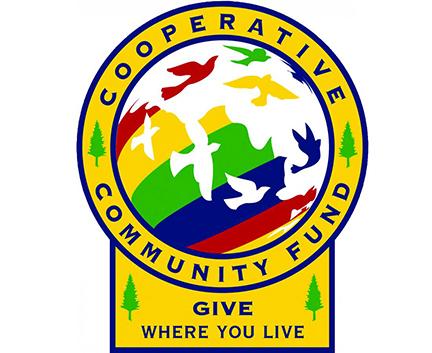A Golden Jubilee and a Capital Idea

There is much to be thankful for in the world of food cooperatives. Through a series of good deeds and contributions from co-ops, funders, and vendors, the Cooperative Community Fund (CCF) grew in 2015 by leveraging another $3 million of much-needed funds for co-op development. The overall leverage of the Twin Pines Cooperative Foundation (TPCF) is now up to $30 million.
We call growing these funds the “Give Where You Live Campaign.” Each local fund serves as a means for local co-op members and shoppers to make donations to an endowment that donates to local nonprofit organizations.
With 2015 marking the golden anniversary of Twin Pines Cooperative Foundation (1965¬2015), our CCF donors celebrated the occasion by contributing another $80,000 toward our anniversary efforts—in other words, through cooperation among cooperatives. It was the largest increase ever in our CCF program. If your co-op has not already done so, why not resolve to join our impactful efforts in 2016?
Thanks to donors
A big thank you to the following donors for contributing toward the $5,000 matches for our Golden Jubilee Year: Blooming Prairie Foundation, Cabot Creamery, Capital Impact Partners, Equal Exchange, Frontier Co-op, National Cooperative Bank, National Co+op Grocers, Organic Valley, and The Cooperative Foundation. Most of these organizations have also committed to funding our 2016 growth goals. Please patronize the organizations that
support us.
We’ll have at least $50,000 to support a number of CCF applicants in 2016. You will be reading this report as we begin a new year and its resolutions. If your co-op doesn’t have a Co-op Community Fund, apply now at www.community.coop. Deadline for 2016 applications is Feb. 28, 2016.
Links to members
The Cooperative Community Fund program is the leader in developing linkages to co-op members. No other national donation program run by food co-ops gets its message to so many co-op members and customers. No other national program raises as much money from members and customers to give back to the communities that our food co-ops serve. The 40 CCF food co-op sponsors of our “Give Where You Live” program have now donated over $500,000 to local nonprofits.
Pat Match
In 201415, we welcomed Frontier Co-op as a new funder of the CCF program. CEO Tony Bedard asked if there were a way that Frontier’s funds could spur existing co-ops to get their members to donate more to their CCFs. Twin Pines Cooperative Foundation jumped at the opportunity to try something we had thought about for a few years. What if we used Frontier Co-op funds to match a co-op’s fund that would match member give-back of their patronage refunds? We tested the Pat Match (Patronage Match) concept with Hunger Mountain, Seward, and Outpost. In all three co-ops, the member donations far exceeded the match that was donated. With Frontier’s help in 2016, we will extend the Pat Match program to other CCFs.
Growth of the CCFs
The combined CCF endowment grew by $300,000 in 2015, a growth of 18 percent. That $300,000 in new funds is immediately invested in organizations that fund cooperative development. Those organizations typically use our funds to leverage external funds in a ratio of 10 to 1—in 2015, as a result, another $3 million dollars was brought into cooperative development. In 2016, there will likely be $400,000 in growth, and therefore another $4 million leveraged. The capacity of the CCF grows every year.
Impact through regional reinvesting
TPCF pursues reinvesting the funds we receive from each region back into development organizations that fund cooperative development in that same region. In this way, the CCF capital works hard for co-ops in the regions from whence it came. Almost every food co-op that remodels, expands, or obtains an additional location gets development dollars from an organization in which TPCF invests. All the entities that TPCF invests in are funding cooperative development.
Successful co-op development occurs when all of the ships in the co-op convoy arrive safely at the same port. (Being a sailor in the Norwegian merchant navy in my youth guides this section.) Among the different ships in the co-op convoy are: members, boards, lawyers, accountants, consultants, developers, bankers, and funders. However, the slowest ship in the co-op convoy is that of “Equity.” The TPCF focus on capital has a goal of speeding up the capital ship. By all of us being engaged in cooperative development together, we can shave years off our shared voyage.
Examples of success
River Valley Co-op hit the ground running with the launch of their CCF in spring of 2014. With two rounds of asking members to donate back their patronage refunds, the co-op has already grown their CCF to $53,000. One River Valley Co-op member donated a repaid $15,000 loan directly to the River Valley CCF.
Central Co-op in Seattle joined the CCF program in 2015. In their first year, Central members have already donated back over $8,000 to the CCF.
In 2014¬15, to celebrate its 40th anniversary, Co-opportunity in Santa Monica rebooted their CCF. Two thousand copies of my book, Co-opportunity: The Rise of a Community Market, were printed, with all the proceeds from the sale of the book going to the Co-opportunity Community Fund. In addition, a match of $5,000 from Co-opportunity, $5,000 from this author/founder, $1,000 from Frontier Co-op, and $1,000 from other sources will challenge Co-opportunity’s members to give $12,000 in donations to their CCF over the next two years. All these efforts will add another $40,000 to Co-opportunity’s CCF by 2018.
2016 promises to be another great year for the CCF program. Want to speed up the co-op capital ship? Join us! www.community.coop or [email protected].







